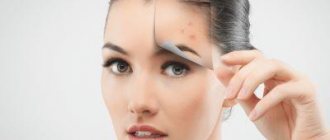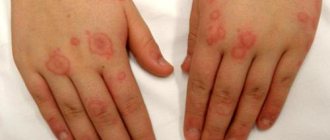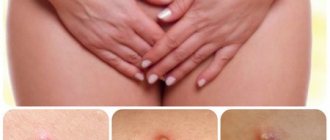Causes
The appearance of a chin rash is not only caused by allergies. These can be skin diseases of a viral (herpes) or bacteriological nature. Sometimes it is acne caused by dysfunction of the endocrine system. The so-called chin allergy in men may be an irritation or a reaction to shaving products.
Therefore, only a doctor can say what specifically triggered the appearance of a rash in a particular case. He will focus not only on the appearance of such rashes, but also on the symptoms accompanying them.
The causes of allergies on the chin may be as follows:
- Reaction to foods. Most often it occurs in children, but it happens that with age a person does not outgrow it. And then hyperreactivity to peanuts, strawberries, citrus fruits, seafood, etc. remains.
- Direct contact with allergens contained in cosmetics.
- Negative effects of external factors: frost or ultraviolet rays (cold or solar urticaria).
- Reaction to certain medications. Many believe that we are talking mainly about antibiotics such as tetracycline or penicillin. But in fact, such a reaction can also be provoked by some drugs for the treatment of the cardiovascular system (for example, Amiodarone), cytostatics, aspirin, and other non-steroidal anti-inflammatory drugs.
Thus, the direct cause of the disease is the body’s hypersensitivity to certain substances that enter it through the respiratory system, skin, and gastrointestinal tract. There, these substances are recognized by the immune system as foreign, which triggers its reaction.
Why your chin itches: reasons
Factors that cause discomfort vary: from simple ones that are easy to cope with on your own, to serious illnesses. It is important to correctly determine why your beard itches in order to completely solve the problem. In many cases, a dermatologist will help, and some problems will require extensive examination and complex measures.
Irritation due to shaving
Poor-quality, dull blades injure the skin; incorrectly chosen shaving products dry out the treated area. As a result, after shaving, the chin and neck become covered with small blisters, pink spots, and the skin itches.
Allergy
Unpleasant sensations are caused by internal and external stimuli. The first group includes food and medications taken. They can be identified if new dishes or ingredients have appeared in the diet, or the chin area has become itchy since taking the medication.
The list of external allergens is much wider:
- scarf, fur;
- animal hair;
- wind, frost;
- dust;
- sweat;
- cosmetics;
- plant pollen;
- ultraviolet radiation.
The manifestation of an allergy can be barely noticeable, expressed as mild itching in the chin area, or cause severe suffering from peeling skin, burning, the appearance of scarlet spots, and rash. In severe cases, additional symptoms are cough, runny nose, difficulty breathing, tissue swelling, and fever.
Moreover, the chin does not always itch due to allergies. Chemical components of cosmetics, tanning, nicotine, alcohol dry out and tighten the skin, causing itching.
Perioral dermatitis
Rashes around the mouth appear in the form of papules and pustules, grouped symmetrically or on one side. The face looks unaesthetic, the skin itches. One of the causes of perioral dermatitis is a side effect of ingesting corticosteroid hormones. There may be cases of the development of the disease when, when treating the skin on the lower parts of the body with corticosteroid ointments, residues on the fingers fall on the facial area when touched. Also, the components contained in antibronchial tablets and inhalation products irritate the skin and provoke the appearance of dermatitis. Sometimes the cause of the disease is the use of fluoridated toothpaste.
Neurological disorders
The problem is a violation of peripheral innervation. Damage to the central nervous system has nothing to do with this. Weakening of certain muscles leads to a decrease or complete loss of skin sensitivity. The result is itching on the face.
Psychological problems
There are many nerve endings grouped in the chin area, so during prolonged overexertion, during stress, or chronic fatigue, this is where it itches first.
If the cause of itching is not identified and eliminated in time, the discomfort will spread to other parts of the body, which will cause even greater inconvenience to the person.
Demodicosis
Demodex mites enter the epidermis of a healthy person through contact and household contact. Microscopic parasites feed on sebum, so they are more likely to appear on the face than on other parts of the body.
With demodicosis, the beard is very itchy, especially at night, subcutaneous passages with small paired holes in the form of black dots are noticeable. Lack of treatment leads to the multiplication of parasites and their spread throughout the body.
Other reasons
Peeling of the skin, the appearance of pink spots, and the formation of a weeping crust indicate skin diseases that require correct diagnosis and immediate treatment.
Mild itching, which does not have accompanying symptoms and appears with a certain frequency, also cannot be ignored. In this way, the body can signal a disruption in the functioning of internal systems. This is how diseases of the liver, kidneys, and endocrine glands manifest themselves.
Symptoms
As a rule, a rash on the chin is not the only manifestation of an allergy. It all depends on the amount of the provoking substance and the severity of the reaction. In most cases, in addition to the rash, a person is bothered by itching.
Depending on how exactly the allergen entered the body, a runny nose may occur (if we are talking about irritants inhaled along with the air, for example, pollen) and increased lacrimation. If it is a food allergy, then digestive function may be impaired, most often this manifests itself as a disorder.
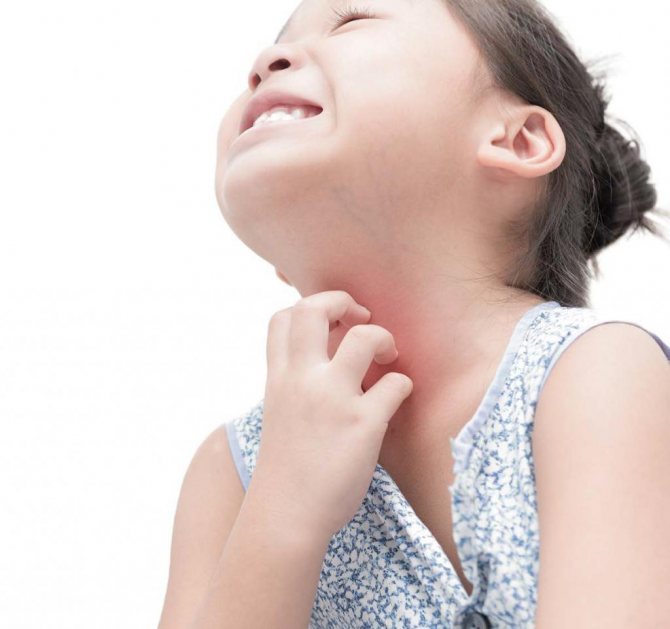
In serious cases, angioedema and even anaphylactic shock are possible. The danger of such conditions is that this is internal swelling of the respiratory system, which can cause spasm of the larynx, and in the absence of adequate medical care they can be fatal.
Contact dermatitis usually simply appears as a red rash and swelling in a limited area of the skin where there was contact with an allergen (for example, a cosmetic product). Sometimes peeling occurs at this place.
Causes of rashes
Often, if the rash is localized in a certain area, it is worth trying to find out which organ is not in order.
Because almost all causes are associated with diseases or their consequences.
Common reasons:
- gynecological diseases;
- disturbances in the functioning of the endocrine system;
- diseases of the digestive system;
- reduced immunity;
- taking hormonal drugs or antibiotics.
Harmful foods in the diet, off-season, regular and poor hygiene also affect the health and beauty of the epidermis.
Sometimes the reason lies in the girl’s bad habit of touching her chin with her hands, which are often dirty.
If this is excluded, a full examination of the body should be performed.
Allergy to sun and cold
If you are allergic to cold, pimples on the chin are not the only symptom. For example, it can manifest itself as urticaria - when multiple blisters appear on the chin and above the upper lip, and sometimes on all open areas of the skin, reminiscent of nettle burns. And this phenomenon is accompanied by itching. Sometimes symptoms of damage to the mucous membranes are added to it. This includes a runny nose, bronchospasm, and allergic conjunctivitis.
Sun allergies can appear as red spots on the chin, often accompanied by itching and flaking.
Folk remedies for rashes on the chin
Traditional medicine can only be used under the strict supervision of a doctor.
It should be borne in mind that some natural recipes can cause an allergic reaction and worsen the condition of the skin.
To treat rashes on the perioral area, ointments and infusions based on medicinal plant materials are used.
To prepare medications at home, you can take pharmaceutical chamomile, thistle, peppermint, aloe, and nettle.
Below are the most popular and proven recipes for facial skin rashes.
To prevent skin rashes on the face, it is necessary to promptly cure all internal diseases, eat a healthy and balanced diet, use high-quality cosmetics from trusted manufacturers, lead an active lifestyle, and give up bad habits.
Update: October 2018
Perioral dermatitis - in medicine it is also called rosacea-like or perioral dermatitis. This is a rare disease, occurring in approximately 1% of the population, most often in women 20-40 years old.
With perioral dermatitis, small papules and pimples appear on the skin around the mouth and on the chin, the skin turns red, irritation appears and papules grow over a larger area. This creates considerable aesthetic, physical and psychological discomfort for a person.
This is how most patients describe the onset of the disease - “... recently I noticed that several small red pimples had formed on my chin, I began to use acne cream and wash my face more often, but this only made it worse.
Within a few months, the skin around the mouth and chin became simply red, and when the acne healed, it left dark spots. Moreover, between the lips and the affected areas around the mouth there is a clear strip of healthy skin without redness...”
Therapy
If your chin itches due to allergies, or other symptoms of this disease are observed, you must urgently stop contact with the allergen. Everything here, of course, depends on what exactly such a reaction is developing to. For example, if you have a cold allergy, you need to quickly warm the problem areas of the skin - at least cover your face with a scarf or handkerchief if it is not possible to go indoors and drink a cup of warm tea.
If we are talking about food allergies, it is worth taking enterosorbents in order to remove irritating substances from the body as quickly as possible.
How to get rid of red spots on the chin
It is best to consult a dermatologist for a correct diagnosis. If the redness is caused by acne, you can wipe the skin with cucumber lotion or a decoction of birch buds twice a day, morning and evening. If the redness is of an allergic nature, try to determine what caused the allergy.
Do wet cleaning of the premises daily, rinse your eyes and nasopharynx. Adjustments should be made to the diet, minimizing the consumption of highly allergic foods such as citrus fruits, peanuts, eggs, and red berries. If necessary, you can take antihistamines prescribed by your doctor.
With rosacea, a person needs to follow a diet. It will also be very useful to undergo a course of cryotherapy and laser therapy.
Local treatment
In addition, doctors prescribe local treatment: ointments and creams with antihistamine and anti-inflammatory effects. For children, for example, this is Fenistil, produced in the form of a gel. For adults - Trimestin and other ointments based on glucocorticosteroids.
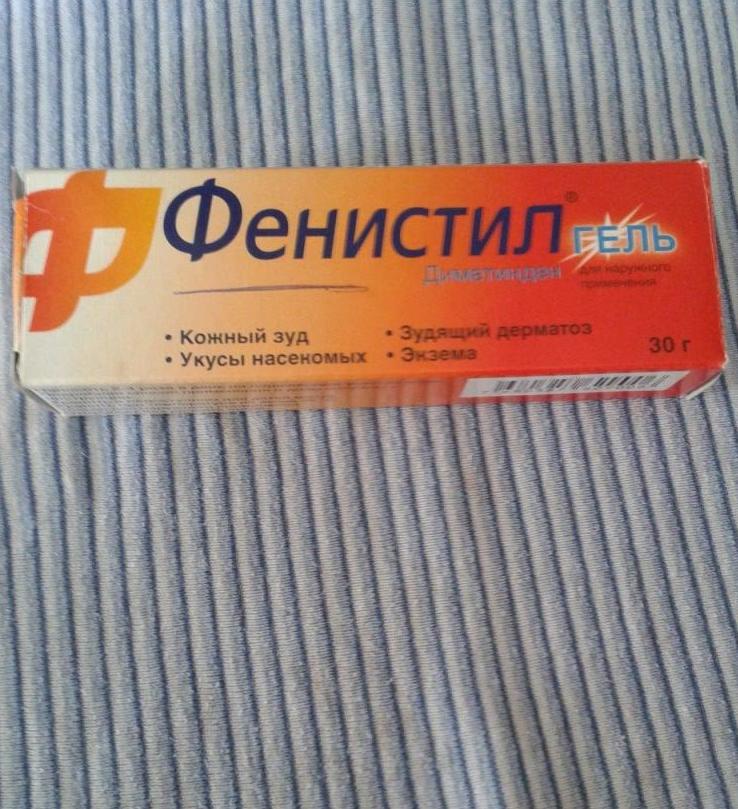
However, it should be remembered that they have quite serious side effects, so they cannot be used for a long time.
And, of course, the most important part of treatment is taking antihistamines. Previously, these were mainly “Suprastin” and “Tavegil”, today more advanced means have appeared, which will be discussed below.
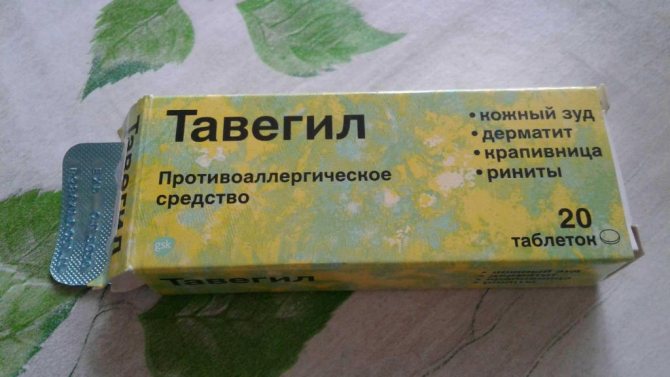
If you treat an allergy to the sun, then, in addition to antihistamines, local treatment is necessary. Basically, these are ointments based on glucocorticosteroids (prednisolone, hydrocortisone, etc.). Doctors also recommend starting to take antioxidants, of which the most important are vitamins C and E. In addition, nicotinic acid is prescribed.
FAQ
Tatyana, 20 years old: - Hello, I heard that using hormonal ointments helps with irritation on the chin. This is true?
Expert's comment: - Good afternoon, if irritation occurs on the chin, you should never use ointments or creams containing hormones.
Yana, 25 years old: - Hello, what ingredients in skin care products can cause dermatitis?
Expert's comment: - Hello, components such as paraffin and sodium lauryl sulfate can provoke the occurrence of perioral dermatitis.
Similar articles
I read the article and want to thank you, everything is accessible and easily written. I will continue to read your site
A 6-year-old nephew developed irritation on his chin in the form of a red spot! What and where could this be from? And also, there are a lot of dogs in his second grandmother’s house! Could the irritation come from dogs?
Good day, Sergey. Of course, you should understand that a child, when playing with animals, will not wash his hands with soap every time, and, as a result, rashes, rashes, irritations and other signs of a dermatological problem will form. Because There are many types of rashes; it is better to consult a specialist (dermatologist) in order to prevent the development of lichen and other contagious skin diseases. It is better not to try to treat the rash yourself, because... in some cases it is strictly forbidden to get them wet. Health to your nephew!
Hello, my name is Ekaterina, I’m 25 years old, after the birth of my second child I developed irritation on my chin in the form of redness and peeling, I use baby cream (it doesn’t help). Advise me an effective remedy! Thank you in advance! .
Good day, Ekaterina. Irritation may appear now, during the cold season, when special skin care is needed. This may be a consequence of chapped face, contact with a scarf or jacket, an allergy to tangerines, etc. Take a closer look at your face, is there any peeling in other areas? Is the irritated area itchy? All this is very important. If only a small area on your chin is peeling, try applying some kind of oil, ideally coconut oil or any other natural oil. If there are still inflammations on the face, it is better to consult a dermatologist for advice. Be healthy!

Other measures
You can’t limit yourself to just one after-sun cream or oil. The fact is that if such an allergy is not treated, then relapses will be much more severe. And instead of the original rash, eczema may develop. Therefore, if photodermatitis (as sun allergy is called) occurs for the second time, then in the future you should avoid contact with ultraviolet rays in every possible way.
And not just give up tanning, but even when going outside in the summer, wear a hat or cap so that a shadow falls on your face.
Questions and answers
When a woman is faced with the appearance of aesthetic problems on her face, she has questions that are sometimes difficult to find clear answers to.
The sooner measures are taken, the faster you will be able to get rid of annoying pimples.
The most popular questions and their answers are given below.
Which doctor should I contact?
Photo: to receive qualified treatment you need to contact a dermatologist or cosmetologist
- To diagnose the cause of the rash, you should contact a cosmetologist who will help you figure out what causes your skin problems.
- If it is not possible to visit a cosmetologist, you can make an appointment with a dermatologist. If necessary, he will give a referral to an endocrinologist, gynecologist and gastroenterologist.
What are the hypodermics talking about?
Subcutaneous acne does not have an outlet and is a consequence of blockage of the sebaceous glands.
This can happen due to various factors: stress, poor hygiene, chronic diseases. To identify the root causes, it is worth visiting an endocrinologist.
Domestic
Internal acne occurs due to poor nutrition.
To treat them, it is worth balancing the diet, eliminating fried, sweet, fatty and flour foods from the diet.
What tests need to be taken
- To find out the reason, it is worth taking tests for hormonal levels and a general blood test.
- Skin scrapings or diagnostic testing of the gastrointestinal tract may be necessary.
Antihistamines
Today there are new allergy drugs that are much more effective than Suprastin and other drugs of the previous generation. In addition, they cause fewer adverse reactions. These are mainly second generation products.
The advantages of second generation products include:
- rapid onset of the desired effect;
- high duration of action, due to which they can be taken once a day (residual effects can be observed for another week after their discontinuation);
- absence of side effects that were characteristic of first-generation drugs (drowsiness, sedation, etc.);
- complex effect, since they have not only antiallergic, but also anti-inflammatory properties.
Second generation drugs include Fenistil, Loratadine, Allergodil and a number of others. This group of products also includes Cetrin. Although there is sometimes confusion here - it is better known as “Cetirizine” or “Zyrtec”, since for a long time it was distributed under this trade name.

What can Cetrin be used for? For any symptoms of allergic reactions. For example, it can be not only a rash, but also rhinitis, conjunctivitis, and other diseases. It is allowed to be given to children starting from the age of six months, but only under medical supervision.
True, these drugs cannot be called an ideal choice, since almost all of them have a cardiotoxic effect.
Irritation on the chin: causes and methods of relief
Rash and peeling that forms on the chin can be caused by:
- Perioral dermatitis. These are small pimples around which the skin turns red, and between them you can see small scales. Sometimes this area of the face itches or even hurts. The appearance of the problem is often provoked by the wrong choice of cosmetics, or the simultaneous use of several products with incompatible components. It can also be caused by the use of corticosteroid drugs. Contacting the skin, they irritate it.
- Hormonal imbalance. If rashes are found on the chin, you need to check the functioning of the thyroid gland, as well as the ovaries. An excess of some hormones and a deficiency of others leads to disruption of sebum production, clogged pores, and peeling.
- Poor nutrition and negative changes in the gastrointestinal tract. Spicy and fatty foods, an abundance of sweets lead to the digestive system being overloaded, and this is reflected in the condition of the epidermis of the lower part of the face.
Skin irritation can be detected on the chin in women for less significant reasons than those listed above:
- allergy to the fabric of a scarf or turtleneck sweater, which often comes into contact with the epidermis;
- sudden change in weather;
- colds, chapping;
- stress;
- vitamin deficiency and, as a consequence, suppressed immunity;
- hypervitaminosis.
A woman may not attach importance to these factors, but they can affect the condition of her chin.
Since ancient times, in the popular imagination, the image of an incredibly beautiful woman is inextricably linked with clean, healthy skin and the selection of the right skin care procedures.
And in our century, this idea has not changed, but has only become stronger in the minds of representatives of the stronger half of humanity. That is why, when irritation appears on the chin, women immediately sound the alarm.
We will look at how to get rid of such a nuisance in this article.
Third generation drugs
They are considered a more advanced version of the described means. Indications for their use are the same as for other antihistamines. That is, what Cetrin is prescribed for is what these are for. For example, “Alersis”, “Fexadin”, “Telfast”.
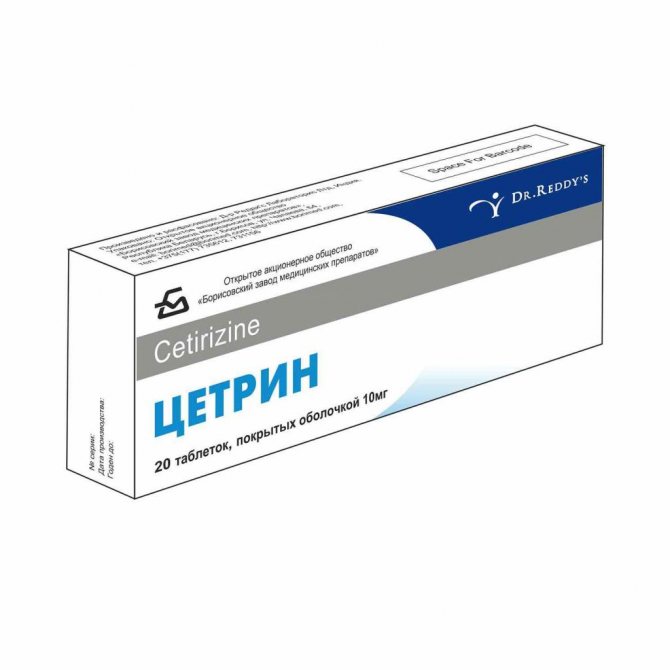
However, doctors believe that the use of third-generation antihistamines is more appropriate when it comes to long-term therapy. That is, this is chronic urticaria or atopic dermatitis, as well as allergic rhinitis or conjunctivitis, in which the duration of the seasonal exacerbation is more than two weeks. They also have an anti-inflammatory effect and do not have a negative effect on the liver.
Why does a rash appear under a woman's chin?
This area of the face is very delicate, tender and characterized by increased sensitivity.
In addition to the above reasons for the appearance of a rash under the chin, this problem can arise against the background of absolutely banal provoking factors:
- irritation from constant contact with clothing (sweater, scarf, jacket/coat collar);
- lack of care in this part of the face (banally ignored);
- improper hair depilation (in some women);
- use of inappropriate care products.
"Suprastin" and its properties
Today, many patients are still interested in the instructions for using Suprastin for allergies, as well as other issues related to it, because doctors still continue to prescribe it.
In fact, first-generation drugs will remain in the arsenal of treating physicians for a long time. On the one hand, during the use of such drugs, a lot of experience has been accumulated, which allows us to predict the mechanism of their action and all possible adverse reactions. On the other hand, it is relatively inexpensive and therefore accessible to most patients.
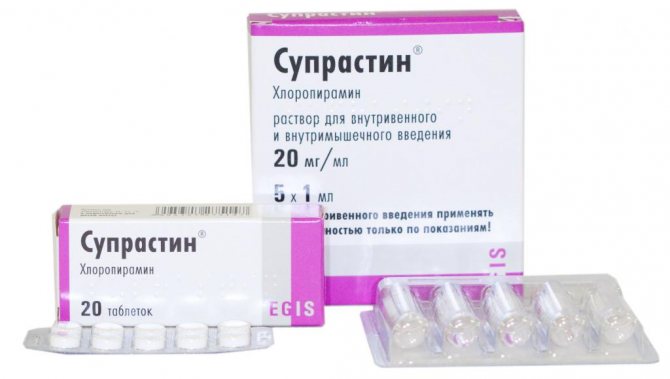
In addition, Suprastin is often used in urgent therapy to relieve acute allergic reactions. Its important advantage is that it is approved for use by young children. Therefore, it would be advisable to consider this drug in more detail.
The active ingredient of Suprastin is chloropyramine. Other classical first-generation antihistamines are also produced on its basis. In addition to having an antihistamine effect, the drug also has an antiemetic effect. In addition, Suprastin has moderate antispasmodic activity.
The therapeutic effect of this drug appears within 15–30 minutes after taking it, which is why many doctors prescribe it because of the speed of its action. The maximum effect occurs within an hour after administration.
Unfortunately, Suprastin does not have such a long-lasting effect as second-generation drugs. Its effect lasts only 3–6 hours. At the same time, it is well distributed in the body, and its excretion is carried out through the kidneys, that is, with urine. It should also be remembered that in children it is eliminated faster than in adults. Please note that children under 3 years of age are not given this drug at all.
Adults are prescribed one tablet 3-4 times a day, children 3-6 years old - half a tablet twice a day. And under the age of 12 years - half a tablet, but three times a day.
Perioral dermatitis - treatment
The first manifestations of this disease can be eliminated in a couple of days, but in order to completely get rid of its progressive form, you will have to spend a couple of months on therapy. Treatment of perioral dermatitis begins with replacing creams, shampoos and other cosmetics with chemically neutral ones. After this, the doctor waits a couple of days and then prescribes antibiotics, special ointments, sunscreens and antihistamines to the patient. Gels for psoriasis and acne will not help cure dermatitis.
Rashes in children and adults can be reduced using traditional medicine. Cooled infusion of chamomile, celandine, calendula or St. John's wort is used to treat reddened skin. If you are allergic to the listed plants, then apply a 1% solution of boric acid to small pimples. In case of oral ailments, special attention is paid to skin care. You should pat your face lightly after washing. Before leaving the house, you need to apply indifferent powders and neutral cooling gels to your skin.
Ointment for perioral dermatitis
When treating skin ailments, antibiotic-based creams work well. The most famous ointment for oral dermatitis is metronidazole. It is applied to areas affected by the disease 2 times a day. Erythromycin has a similar effect. It is rubbed into the chin and lip area 2-3 times a day. If the inflammatory process does not stop, the doctor prescribes facial gels with pimecrolimus. The product must be used carefully, because... it reduces local immunity.

Diet for perioral dermatitis
A vegetarian diet is considered ideal. Products classified as allergenic should be excluded from the menu. The diet for perioral dermatitis should be balanced, i.e. include boiled meat, porridge with water, vegetables. Fruits are rarely given. Spicy, fried, fatty and sweet foods should be removed from the diet. If a child under 10 years of age is being treated for an illness, all dairy products are excluded from the menu. The diet should be followed for 3-4 months after the symptoms of the disease disappear.
Side effects and contraindications
Side effects when taking Suprastin occur quite rarely; in any case, they are temporary, so they quickly disappear after discontinuation of the drug. However, do not forget about such undesirable reactions as drowsiness, dizziness, tremor, cardiac arrhythmia, tachycardia, various dyspeptic symptoms, urinary retention, etc. If such reactions occur, you should inform your doctor.
Contraindications to its use are lactose intolerance (it is included in the drug as an auxiliary component), an acute attack of bronchial asthma, and hypersensitivity to the main substance.
Although there are no direct contraindications to taking this drug during pregnancy, doctors emphasize that no studies have been conducted regarding its safety for the expectant mother and child. Therefore, in such cases, it is better to look for a safer drug among the second and third generation drugs.
This drug is prescribed with caution for certain types of glaucoma (due to the ability to increase intraocular pressure), prostatic hyperplasia, chronic liver and kidney diseases, and the presence of cardiovascular diseases.
Causes of the disease
The exact causes of oral dermatitis have not been established.
But experts have identified factors and causes influencing the development of the disease. Women often use moisturizing, emollient, nourishing creams or medications with fluorinated corticosteroids. They destroy the structure of collagen and elastin and damage blood vessels.
Conditionally pathogenic microflora on the skin is present in all people. It begins to grow as soon as a person’s immunity decreases . An inflammatory process occurs on the skin.
Other causes of oral dermatitis:
- hormonal imbalance in the body;
- use of incorrectly selected cosmetics;
- chronic infectious focus;
- disruptions in the nervous and endocrine systems;
- intolerance by the epidermis to components of cosmetics;
- use of fluoride-containing toothpastes;
- tendency to allergies;
- excess ultraviolet radiation;
- weakened immunity;
- gastrointestinal diseases;
- change in climatic conditions;
- bronchial asthma;
- allergic rhinitis;
- dentures;
- abrupt withdrawal of hormonal cream.
Quite often oral dermatitis is caused by the following drugs:
- petrolatum;
- isopropyl myristate;
- cinnamon flavoring;
- lauryl sulfate;
- paraffin.
Causes of oral dermatitis in a child:
- the use of hormonal ointments to eliminate abscessive lesions of the epithelium;
- immune imbalance in a growing body;
- hormonal imbalance;
- hypovitaminosis resulting from a lack of nutrients.
During perinatal age, infants sometimes experience hormonal changes due to the hormones accumulated by the mother during pregnancy. This is manifested by oral dermatitis, but this is a very rare occurrence.
Ovulation and acne on the chin
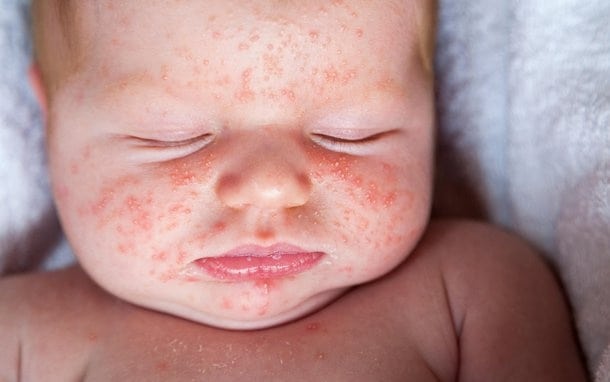
Ovulation and acne on a woman's delicate chin are frequent companions, although most suffer from them before menstruation. In the middle of the cycle, another hormonal change occurs in the body: the volume of estrogen gradually decreases and the amount of progesterone begins to increase. The latter substance affects the activity of the sebaceous glands, increasing it. Hence the occurrence of inflammation on the chin.
The problem usually occurs at a young age, when the cycle is still unstable. But sometimes it manifests itself in a later period. Sometimes an adult woman should take a hormone test, since the culprit for the appearance of acne in the middle of the cycle may be a failure in this area.
Treatment options
- Salicylic acid.
- Zinc ointment.
- Tincture of calendula.
- Streptocide ointment.
- Gel "Baziron AS".
- Lotion "Zinerit".
- Gel "Mitrogil".
- Ichthyol ointment.
- Vishnevsky ointment.
- Metronidazole tablets.
- Anti-acne cosmetics as a prophylactic agent.
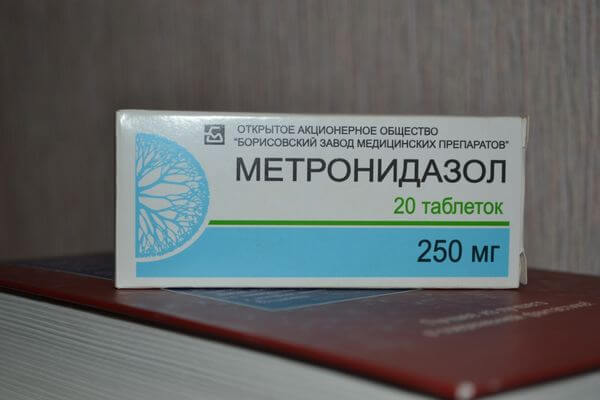
Physiotherapy:
- Mechanical facial cleansing.
- Chemical peeling of the face.
- Ozone therapy.
- Mesotherapy.
- Laser treatment.
- Cryotherapy (liquid nitrogen).
To improve the functioning of internal organs, as well as to prevent blockage of the sebaceous glands, it is best to remove or minimize the consumption of sweets, animal fats, spicy, smoked and too salty foods, alcoholic drinks, fast food, soda, and processed cheese from the diet.
It is best to give preference to vegetables, fruits, whole grain cereals, salads with vegetable oil, lean meats and fish. It is also recommended to drink plenty of liquid - water, green tea, fruit drinks, compotes.
Ulcers on the chin in women: causes
Abscesses on the chin in women can also have different causes of formation - from easily removable to very serious:
- active use of decorative cosmetics in combination with ignoring proper skin care (thick foundation plus poor-quality washing and moisturizing);
- hormonal problems, that is, the onset of puberty or disorders in this area in adult women;
- infection when a woman squeezes out pimples with not completely clean hands, having not washed her face enough;
- the presence of parasites in the body, both skin and internal organs;
- gynecological pathologies;
- digestive problems aggravated by poor diet;
- immune disorders.
White rash on chin
A white rash that appears on the chin may indicate one of the following problems:
- stomach disease caused by Helicobacter Pylori;
- intestinal pathologies;
- the presence of a skin parasite (fungus or molluscum contagiosum);
- inflammatory process in the body.
However, small white rashes on the lower part of the face may be one of the accompaniments of puberty, the “rebellion of hormones” characteristic of this period. Therefore, it is important not to seek treatment on your own, but to turn to specialists to accurately identify the cause.




